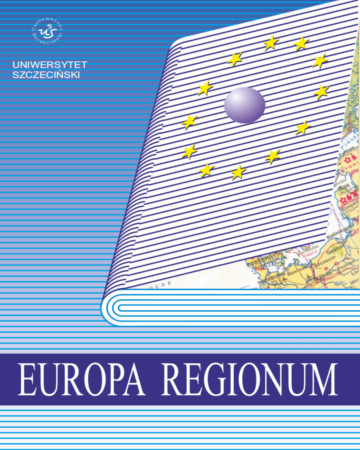
ISSN: 1428-278X
OAI
DOI: 10.18276/er.2017.33-02


Issue archive /
t. 33 2017
OCHRONA WŁASNOŚCI INTELEKTUALNEJ PRZEDSIĘBIORSTW Z WYKORZYSTANIEM ŚRODKÓW UNIJNYCH – BARIERY I WYZWANIA
(Protection of Intellect ual Proper t y of Enter pr ises with the Use of EU Fu nds –Bar r iers and Challenges)
| Authors: |
Agnieszka
Chęcińska-Zaucha
Akademia Wychowania Fizycznego w Katowicach Katedra Zarządzania Sportem i Turystyką Zofia Gródek-Szostak Uniwersytet Ekonomiczny w Krakowie Wydział Zarządzania Katedra Ekonomiki i Organizacji Przedsiębiorstw Danuta Kajrunajtys Uniwersytet Ekonomiczny w Krakowie Wydział Ekonomii i Stosunków Międzynarodowych Katedra Zarządzania Międzynarodowego |
| Keywords: | Intellectual property innovation SMEs patents |
| Data publikacji całości: | 2017-12-31 |
| Page range: | 11 (15-25) |
| Klasyfikacja JEL: | O14 O11 |
Abstract
The article deals with issues related to intellectual property protection in an enterprise. The aim of this study is to show the role of the “Intelligent Development Operational Program 2014–2020”, Submeasure 2.3.4. “Protection of Industrial Property” in the context of the acquisition of intellectual property rights by entities of the SME sector. The object of the analysis was to answer the question of how public funds support entrepreneurs in the process of creative work protection. The analysis was based on the results of literature research and data on progress in the implementation of the Intelligent Development Operational Program.
Download file
Article file
Bibliography
| 1. | Boldrin, M., Levine, D.K. (2004). Rent Seeking and Innovation. Journal of Monetary Economics, 51 (1), 127–160. |
| 2. | Convention Establishing the World Intellectual Property Organization (1967). Pobrane z: https://treaties.un.org/doc/Publication/UNTS/Volume%20828/volume-828-I-11846English.pdf (18.08.2017). |
| 3. | Dinopoulos, E., Syropoulos, C. (2007). Rent Protection as a Barrier to Innovation and Growth. Economic Theory, 32, 309–332. |
| 4. | Furukawa, Y. (2007). The Protection of Intellectual Property Rights and Endogenous Growth: Is Stronger Always Better? Journal of Economic Dynamics & Control, 31 (11), 3644–3670. |
| 5. | Kajrunajtys, D. (2009). Własność intelektualna jako przedmiot obrotu gospodarczego. W: R. Wisła (red.), Rozwój współpracy sektorów publicznego i prywatnego z wykorzystaniem praw własności intelektualnej (s. 132–150). Warszawa: Wydawnictwo Wiedzy i Innowacji. |
| 6. | Kołtuniak, M. (2016). Dotacje na patenty i ochronę wzorów. Pobrane z: http://www.rp.pl/Firma/302069963-Dotacje-na-patenty-i-ochrone-wzorow.html#ap-1 (10.09.2017). |
| 7. | Ochrona własności przemysłowej (2017). Pobrane z: http://poir.parp.gov.pl/ochrona-wlasnosci-przemyslowej/poddzialanie-2-3-4-ochrona-wlasnosci-przemyslowej (10.09.2017). |
| 8. | Patent na dotację, czyli kto może dostać dotację na uzyskanie patentu (2017). Pobrane z: http://serwisy.gazetaprawna.pl/fundusze-unijne/artykuly/1059882,patent-na-dotacje-czyli-kto-moze-dostac-dotacje-na-uzyskanie-patentu.html (25.08.2017). |
| 9. | Ritala, P., Olander, H., Michailova, S., Husted, K. (2015). Knowledge sharing, knowledge leaking and relative innovation performance: an empirical study. Technovation, 35 (1), 22–31. |
| 10. | Schubert, T. (2016). Infringement of intellectual property in innovation partnership. R&D Management, 46 (S2), 596–611. |
| 11. | Stiglitz, J.E. (2004). Globalizacja. Warszawa: Wydawnictwo Naukowe PWN. |
| 12. | Wesołowska, E. (2015). Czy unijne pieniądze uruchomiły lawinę patentów? Zobacz, co na to wskazuje. Pobrane z: http://funduszeue.wp.pl/informacje/czy-unijne-pieniadze-uruchomily-lawine-patentow-zobacz-co-na-to-wskazuje_a165/2 ( 10.09.2017). |
| 13. | Wady i zalety poszczególnych procedur międzynarodowej ochrony patentowej wynalazku. Pobrane z: http://bridge.gov.pl/aktualnosc/pokaz/wady-i-zalety-poszczegolnych-procedur-miedzynarodowej-ochrony-patentowej-wynalazku/?L=0%23&cHash=60de-727694bf886315f56818ffd9043e (10.09.2017). |